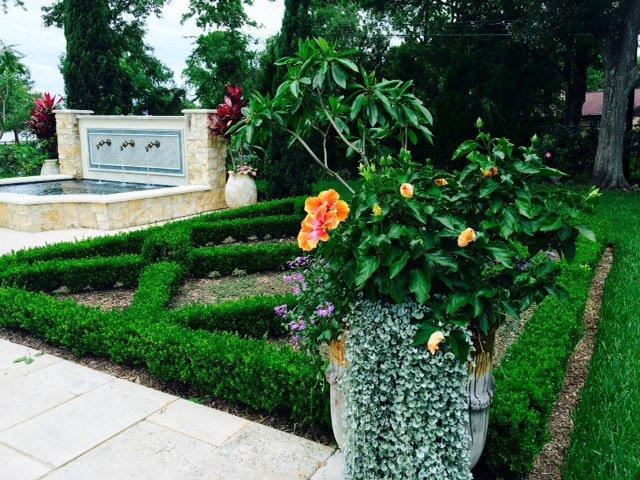I had never thought of landscape architecture as creating habitats for birds, butterflies and bees. I always thought of it as creating a space that enhances the architecture of a specific building, echoing the style intended; while creating spaces for gathering, play, gardening and tying all these elements together. But, the last two to three years, I have noticed a movement. People want to have gardens that attract pollinators!
Last weekend at our nursery we were fortunate to have two guest speakers Chris Liles and Teresa See, both are certified master-gardeners and authorities on attracting pollinators. Chris Liles grew up in Alaska, then moved to Oregon, and for the last twenty years has called Houston home. It is here that she decided to enroll in the Master Gardening program so that she could learn about gardening in this area. Teresa See is a native Houstonian, she was introduced to the Master Gardening program during a Christmas tour with her garden club where she had met a master gardener who encouraged her to learn more. The program is an intense ten-week course, which includes 60 hours of volunteering in the first year. Here they are taught not only about plants and trees but also about soil, identifying insects – disease etc.
Chris Liles (left) & Teresa See (right)
To learn more about the Harris County Master Gardening program follow this link https://hcmga.tamu.edu/public/About.aspx
Butterflies are cold blooded insects; provide them a sunny location in your garden. Create a butterfly habitat in an area that is sheltered from wind, is sunny, but can also provide a little shade—an ornamental tree or Ornamental grass would be ideal. Make sure your soil is damp, as this is how butterflies drink – they suck water from moist ground. Butterflies like pink, purple, red, yellow and orange. These are some plants that attract butterflies :
American Milkweed -Asclepias is a lavai food source for the Monarch butterfly.
This plant is also an important nectar source for native bees, wasps and other nectar seeking insects
Bees are an important insect for our gardens, and for our way of life. They sustain our ecosystems by helping plants re-produce. Bees and other pollinators are responsible for bringing us one out of every three bites of food we eat. Honey bees can see colors that we cannot, they see way up in the ultraviolet end of the spectrum. Flowers that appear white to us are spectacularly patterned to them. However, they cannot see colors in the red/orange spectrum too well. Red flowers appear dark and boring to them. Thus, their favorite colors to feed on tend to be yellow, blue, purple and white. Here are a few of their favorite flowers.
To attract birds , your habitat needs to include, food, water and shelter — for the birds that live in Houston year round, the ones that are migrating through Houston, and those that winter here. Water is very important to them– add a bird-bath or a shallow dish with clean water in an open area in your garden. I notice in my garden, birds love my fountain; they drink and bathe in it, then rest on a nearby tree. Birds will learn to depend on this source for water, so clean and add water regularly. Birds prefer a diversity of shrubs and trees, so create a garden with an array of trees, shrubs and perennials to attract them. Birds love Oak trees, Pecan trees, River Birch trees and Magnolia trees. They are attracted to most bright colors, but seem to love red the most. Here are a few of my favorite plants and trees to attract birds:
I hope I have inspired you to add some of these trees, shrubs or perennials to your garden so that we can create a habitat for these pollinators! Thank you Chris Liles & Teresa See for sharing your knowledge and passion with us and our customers last weekend! Please let me know if you have any questions or comments and visit our nursery Bay Area Design & Landscape garden center to learn more.
Ciao Mardel



























